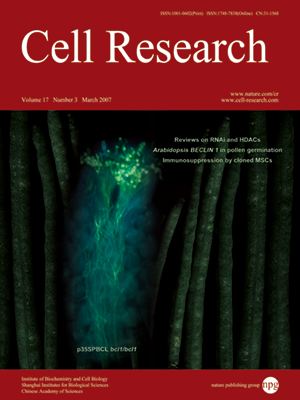
Volume 17, No 3, Mar 2007
ISSN: 1001-0602
EISSN: 1748-7838 2018
impact factor 17.848*
(Clarivate Analytics, 2019)
Volume 17 Issue 3, March 2007: 195-211
REVIEWS
HDACs, histone deacetylation and gene transcription: from molecular biology to cancer therapeutics
Paola Gallinari1, Stefania Di Marco1, Phillip Jones1, Michele Pallaoro1 and Christian Steinkühler1
1Istituto di Ricerche di Biologia Molecolare "P. Angeletti"-IRBM-Merck Research Laboratories Rome, Via Pontina Km 30,600, 00040 Pomezia, Italy
Correspondence: Christian, Steinkühler(christian_steinkuhler@merck.com)
Histone deacetylases (HDACs) and histone acetyl transferases (HATs) are two counteracting enzyme families whose enzymatic activity controls the acetylation state of protein lysine residues, notably those contained in the N-terminal extensions of the core histones. Acetylation of histones affects gene expression through its influence on chromatin conformation. In addition, several non-histone proteins are regulated in their stability or biological function by the acetylation state of specific lysine residues. HDACs intervene in a multitude of biological processes and are part of a multiprotein family in which each member has its specialized functions. In addition, HDAC activity is tightly controlled through targeted recruitment, protein-protein interactions and post-translational modifications. Control of cell cycle progression, cell survival and differentiation are among the most important roles of these enzymes. Since these processes are affected by malignant transformation, HDAC inhibitors were developed as antineoplastic drugs and are showing encouraging efficacy in cancer patients
Cell Research (2007) 17: 195-211. doi: 10.1038/sj.cr.7310149; published online 27 February 2007
FULL TEXT | PDF
Browse 1760


